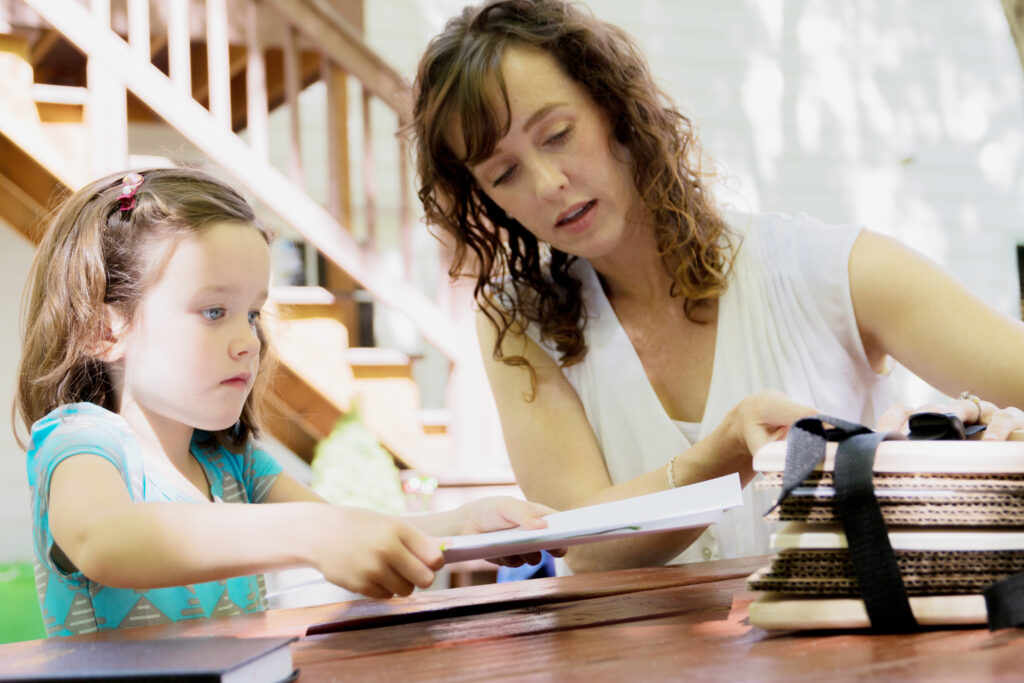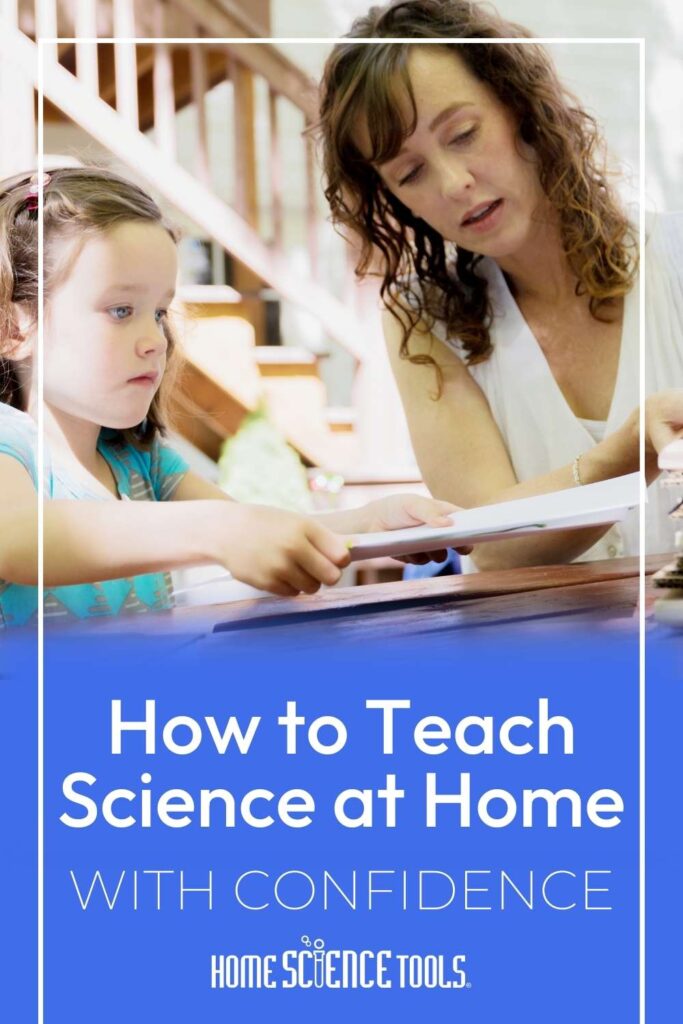Teaching science at home can be a daunting task – but it doesn’t have to be! As a parent, it’s easy to think that since you don’t have the resources that teachers in a typical classroom might have, you can’t teach science effectively to your kids. But teaching science at home (possibly with the kitchen table as your classroom) is not only doable – it’s something to look forward to. We hope these tips help inspire you to dive in to science at home!
Make Teaching Science a Priority
Do you view teaching science as a priority? If you find science boring, less important than other subjects, or much too challenging, this article is for you.
First, remember the potential! Science is an essential part of a well-rounded education and learning experience. Many states require 3-4 years of science classes, including one class with a lab, to graduate from high school. Most colleges won’t accept less, either. But more than that, science gives your kids the benefit of better understanding and appreciating the world around them. And like history, science encourages us to think clearly about issues based on evidence and reliable sources – something that can influence future generations.
Start at an Early Age

Skimping on science instruction until high school guarantees that completing required years for graduation and college will be difficult. Instead, we highly recommend that quality hands-on science learning begin early. This gives kids a positive outlook on science as well as memorable experiences. Most young kids don’t need to be convinced to do hands-on science, but exposing them to it early on will set them up for a lifetime of learning.
It’s best to start teaching science concepts at home in the elementary grades for several reasons. The main one is to build precept upon precept. Learning science basics at the elementary level enables students to study the same concepts in more depth in middle school. They can continue building on their knowledge and arrive at high school level fully equipped for any science class.
Another reason to start early is that young children are highly curious and eager to experience things around them! Learning science is one of the best ways to answer many of the questions kids have. Why IS the sky blue? You don’t have to know all the answers yourself – you can dig right in and start investigating with your child.
Learning science at an early age helps kids understand things around them, helping them appreciate and enjoy their world more deeply. Learning about rocks and minerals, for example, transforms “just rocks” into a fascinating world of crystals and colorations to explore.
Finally, an early introduction to science at home helps develop a love for science. With the growing demand for STEM-related science professions, providing a science education for your children may lead directly to their future careers! Your daughter could be the person who discovers a cure for Lou Gehrig’s disease or diabetes. Your son may discover a new source of energy or better use for resources in the natural world. The possibilities in science are endless.
Hands-on Science & Curriculum Choices
Whether your kids already enjoy science or feel indifferent to it, you need a great curriculum that keeps them engaged and interested in learning! A good textbook (or a selection of books, if you don’t use curriculum) that clearly explains concepts is important. But including hands-on science exploration is the number one way to not only keep kids interested in their studies but also truly grasp science concepts.
A good science curriculum will include hands-on experiments, sound explanations, and questions to encourage critical thinking and problem-solving. Not sure where to start? Try our award-winning all-inclusive curriculum, Science Unlocked, which was developed with busy families in mind. It comes with a teacher’s guide and schedule to eliminate prep time AND includes every item needed for a whole school year of hands-on discovery!
Children are naturally curious and love to explore their world. Watch this short video to see how easy it is to feed their curiosity, engaging them in real hands-on science discovery and learning.
Schedule Science
When you first get started with science, you may wonder how it’s possible to fit another thing into an already busy schedule. One way is to prioritize science in your homeschool schedule at the beginning of the school year. Even if you only teach science one day a week, engage in experiments regularly and consistently on that day. If you can’t cover all the lessons during the school year, consider continuing science instruction into summer. With interesting and engaging hands-on learning, it won’t even feel like “doing school.”
Here are more ideas for how to fit science into busy schedules:
- Choose lessons that lend themselves well to outdoor adventures on spring and fall afternoons. You can use many of these kits to investigate pond life, collect insects, test soil pH levels, and identify leaves & trees.
- Involve a grandparent, aunt, uncle, or neighbor who would enjoy spending time doing science experiments with your children. By involving others, you free up your time for other necessary things and allow your kids the experience of learning from another adult.
- Multitask when possible. Many chores can be done while a student or parent reads aloud. Examples include folding clothes, cutting out classroom materials for the next day, or preparing part of a meal.
- Although some students will require undivided attention during their science study, others may embrace the independence of working on their own, knowing you’re still available for questions.
Organize Science Materials
The old proverb “A place for everything and everything in its place” is especially helpful when teaching science at home! Rather than hunt for lab materials every time, gather as much as you can at the beginning of the year and keep it stored together. (You can even order a full science kit with everything you need for the experiments in your science curriculum!)
Science equipment can last for many years – or a lifetime, in the case of our Home Microscopes – if it’s cared for well. Clean labware right after your lesson, whenever possible. Designate a closet shelf that’s beyond the reach of younger children or use a bin with a locking lid, since lab glassware like test tubes can break and chemicals can be hazardous if misused.
Teaching Science to Multiple Students
Teaching science to several kids at once makes efficient use of your time as a homeschool parent! Here are some ways to teach multiple students at once:
- Whenever possible, teach a full year of science to students who are 1-3 years apart. Bring the younger child up to the level of the oldest student. The younger one may need extra help, but both kids will benefit. For example, you could do a unit study on nature with your 5- and 7-year-olds or teach biology to a 12- and 15-year-old together, since biology is just a more in-depth study of the life science courses typically taught in seventh grade.
- Focus on thematic units with students of all ages. A nature walk or studying pond water would benefit students of various ages. An elementary, middle school, and high school student may all need to collect insects for different reasons. Look for ways that individual curriculums overlap.
- Involve older students in teaching younger students. This provides older kids with an opportunity to review and explain what they know. Older kids might set up experiments, read a textbook aloud, and assist or even perform an experiment or dissection for younger siblings.
Teaching Science at Home Is Worth It
In the end, if you devote energy to make science a part of your learning experience now, your kids will reap the benefits for years to come. After all, the love of science is truly a gift that keeps on giving! It’s something your children can use throughout their lives and pass along to their own children someday.






